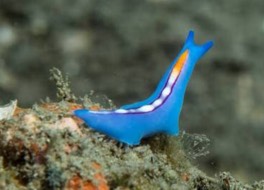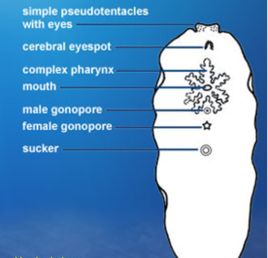Sign up for FlowVella
Sign up with FacebookAlready have an account? Sign in now
By registering you are agreeing to our
Terms of Service
Loading Flow


Racing Stripe Flatworm
Racing stripe flatworm is a very vibrant and colourful marine flatworm. Out of the phyla, Pseudoceros bifurcus is the only non-parasitic species and it is also a soft invertebrate. The general size of the racing stripe flatworm can vary from microscopic, to millimetres and the maximum length is 6 centimetres. Their lifespan ranges from 60-140 days, and the life cycle of a racing stripe flatworm begins with an egg being born, then transitioning to a larvae and entering the adult stage. Similar to a tapeworm, however they are hermaphrodites.
It is commonly found by itself or in pairs on corals and rocky reefs in tropical oceans like the Indo-West Pacific Ocean and between the depth of 1 to 20 metres. This species had been reported for sighting in Mayotte Island, Madagascar, and in the Central Great Barrier Reef, Australia.
Under the pseudoceros genus, the species are determined by how they look visually. They usually have very distinct colours and unique patterns. The body of a racing stripe flatworm mainly consist of colour between greenish-blue to lavender. The most recognisable part of a racing stripe flatworm is the central stripe and the orange mark. The central stripe is coloured white with a purple margin, while the orange mark is located towards the end of the stripe.
Racing stripe flatworm feeds on ascidians, shelled molluscs, dead plants or other marine animal matters. It usually preys on similarly slow moving organisms like the flatworm itself. They ingest their food but digest it outside of the body, they use the muscular pharynx to grind the prey into smaller pieces. The food then travels to the intestines and excrete out of the body in the same opening it takes in food. They are widely hunted by fish such as the Atlantic Cod, as well as crustaceans like Red King Crab.
Before evolution, I would assume pseudoceros bifurcus was dull in colour and easy to spot (larger than 6 cm). Therefore it decreased drastically in population and experienced the pressure to sustain a population from the environment. Now racing stripe flatworm have evolved into being brightly coloured, to scare off potential predators. Besides that they have improved their scent of smell and to gliding/crawling on the ocean floor, making it more difficult for large fishes.
Common Name- Racing Stripe flatworm
Scientific Name- Pseudoceros Bifurcus
Kingdom- Animalia
Phylum- Platyhelminthes
Class- Turbellaria
Order- Polycladida
Family- Pseudocerotidae
Genus- Pseudoceros
Species- Bifurcus

